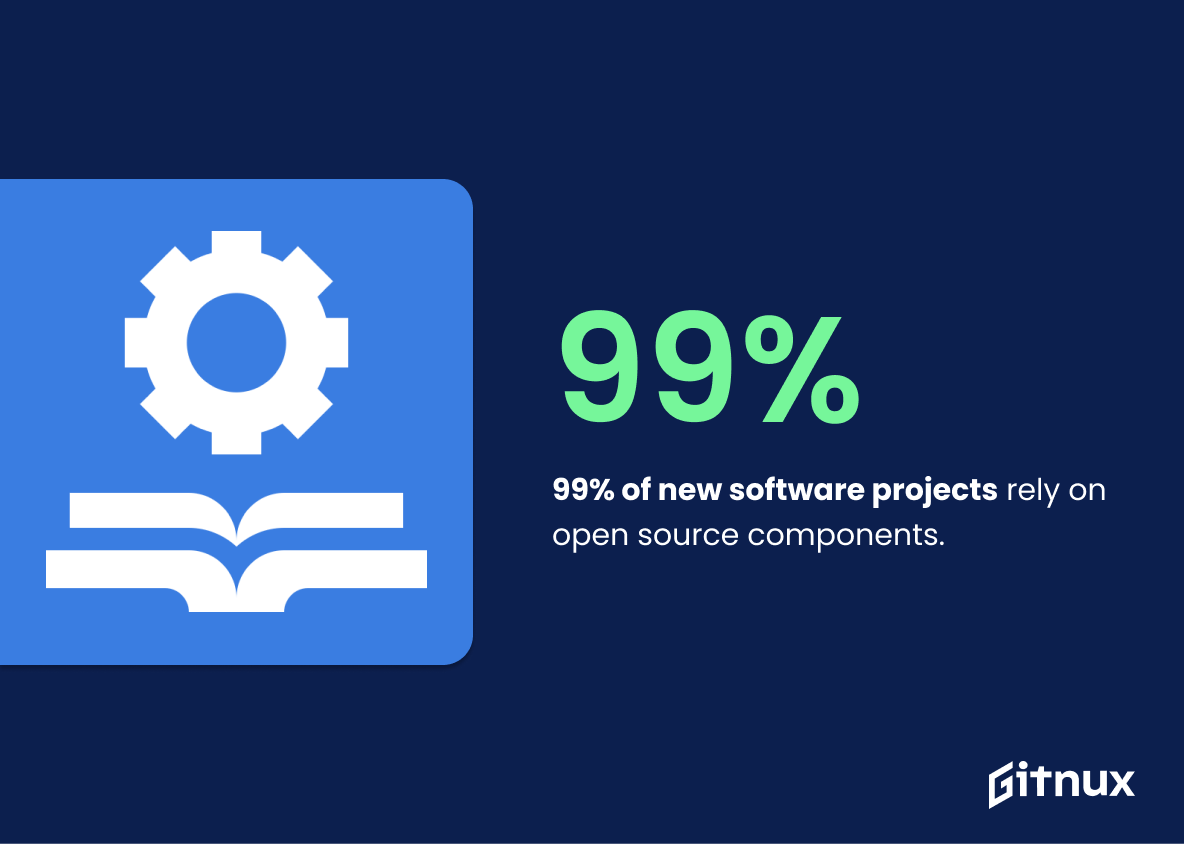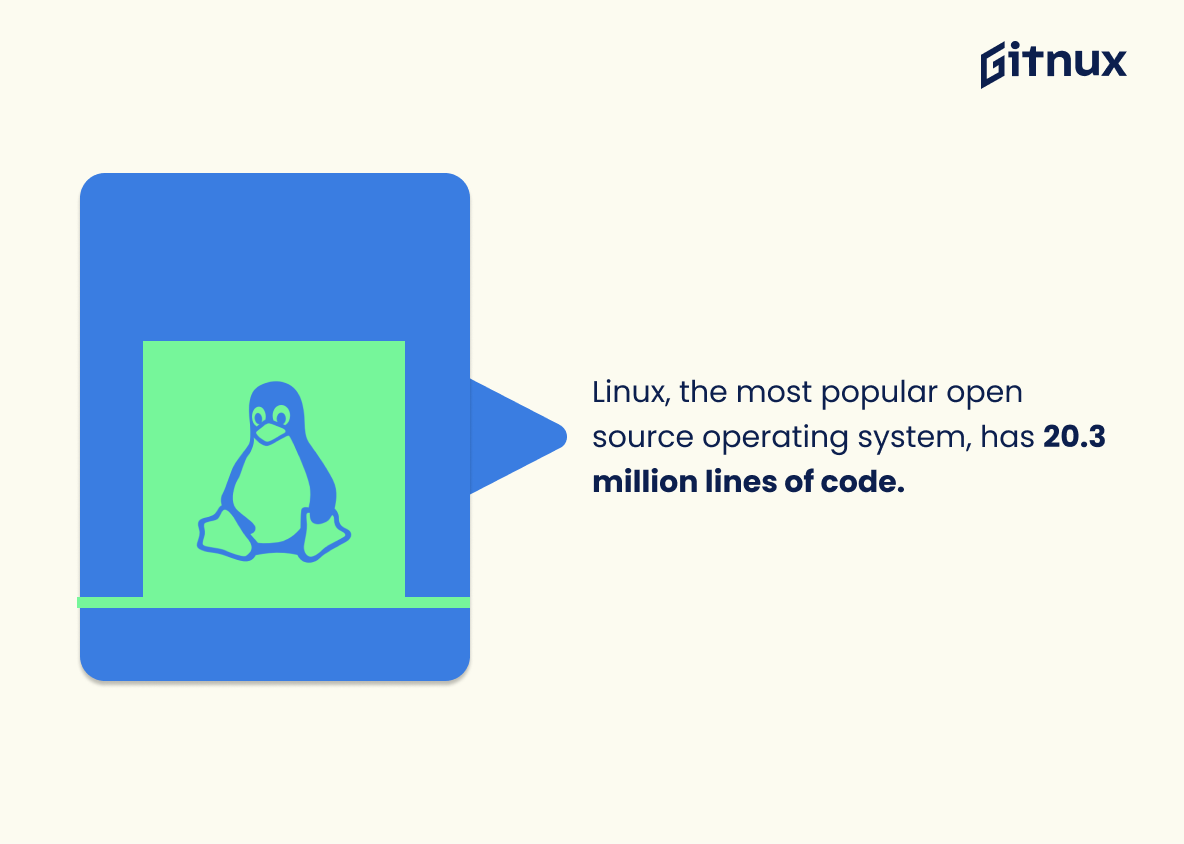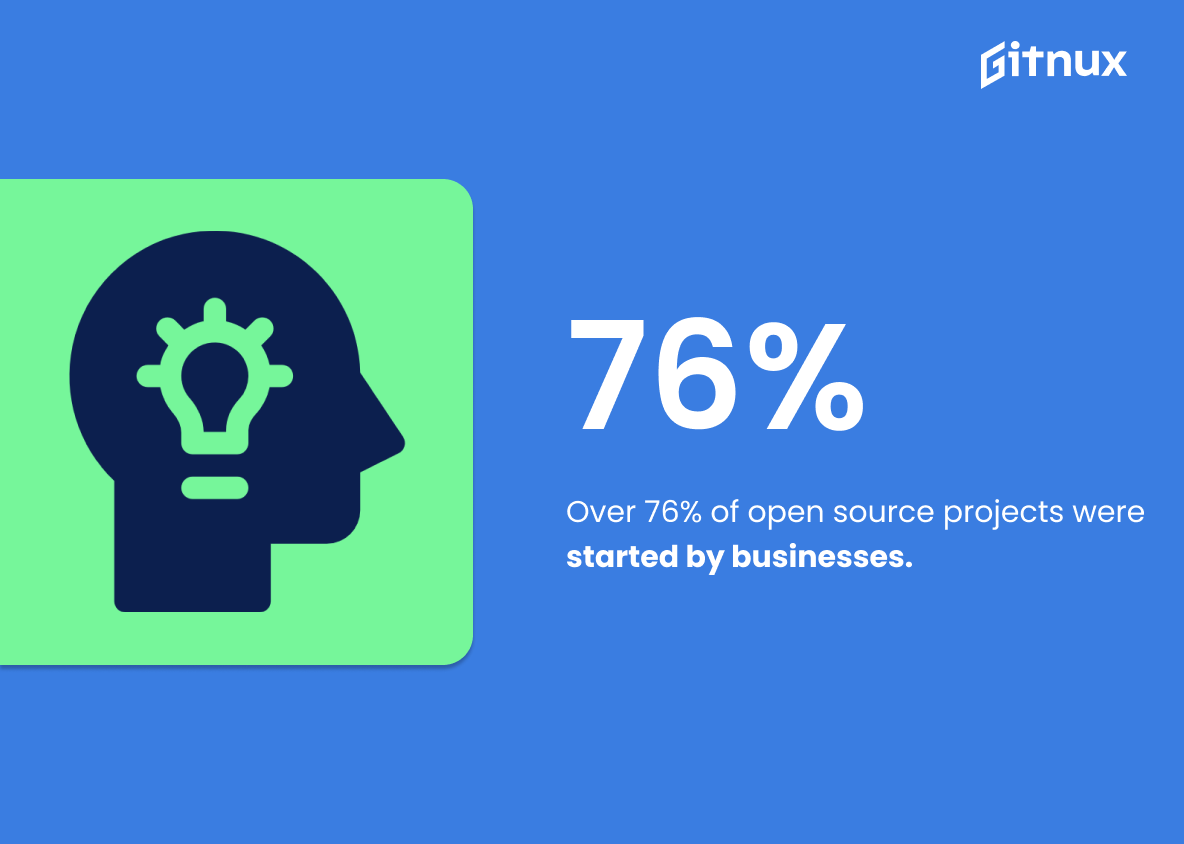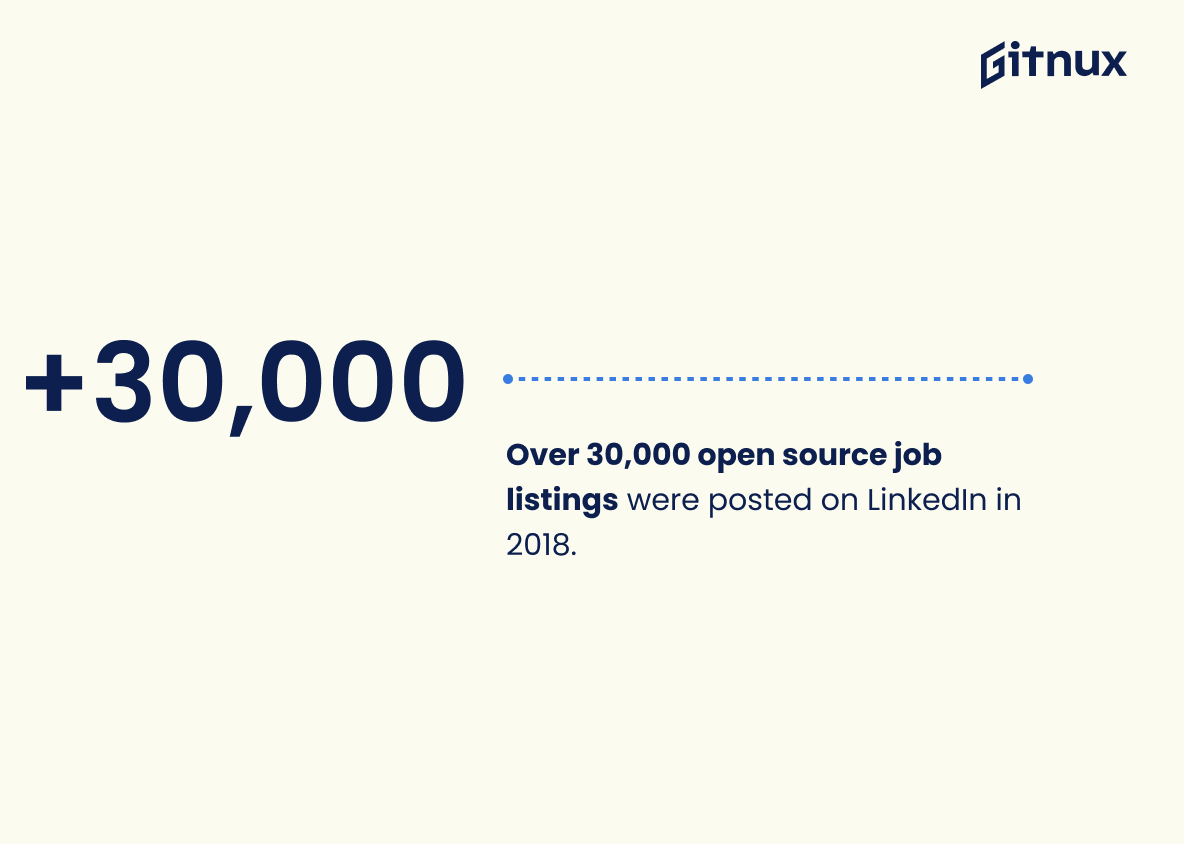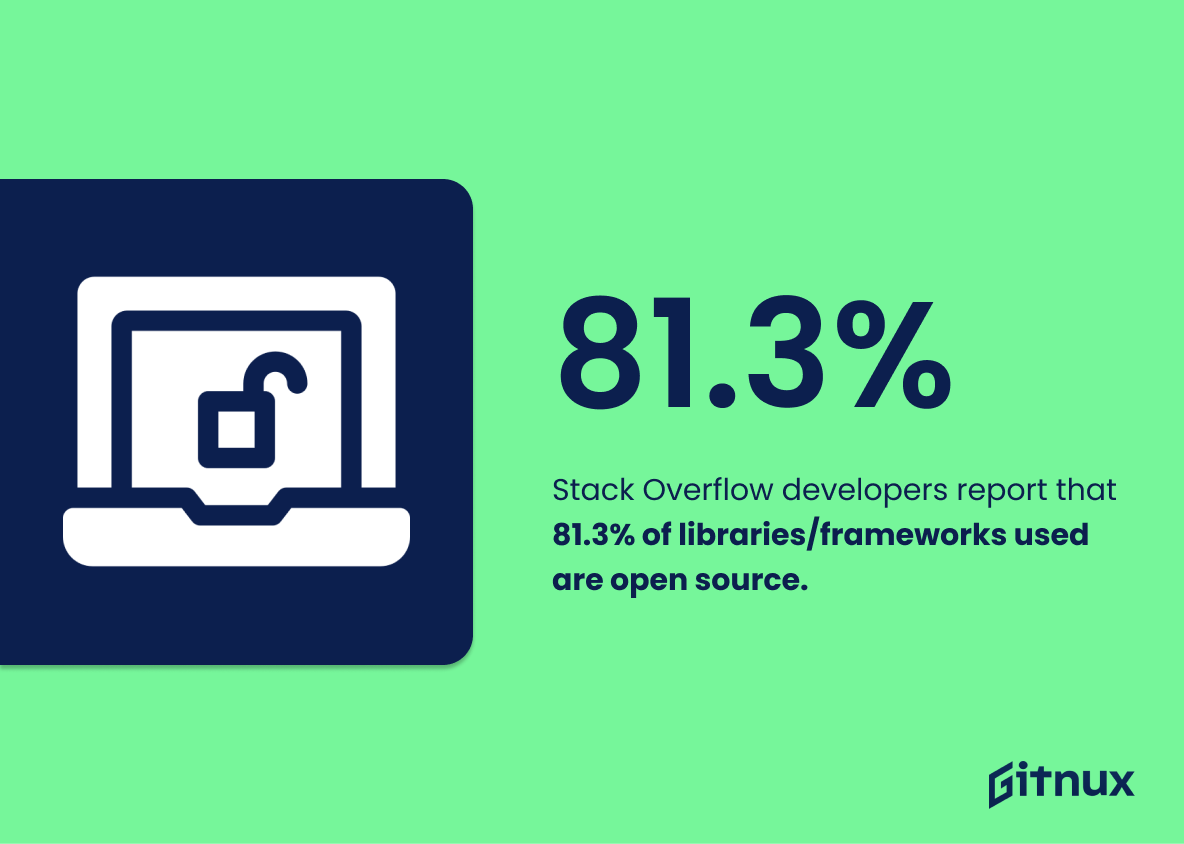Open source software is becoming increasingly popular among businesses and developers around the world. According to a survey by WhiteSource Software, over 70% of companies use open source software in some capacity. Additionally, Stack Overflow reports that nearly 50% of developers contribute to open-source projects on GitHub – which currently hosts more than 200 million repositories.
Furthermore, 99% of new software projects rely on open source components for their development process. Open-source project repositories receive 10 times more contributions than private ones as well; this could be attributed to the fact that 78% of companies prefer using open source solutions over proprietary ones.
However, there are risks associated with relying heavily on these tools: according to Synopsys’ 2019 report, over half (50%) of codebases examined contained high-risk vulnerabilities due to outdated or insecure versions being used within them. Linux – one such example – has 20 million lines of code alone. Microsoft is also now the top contributor when it comes to contributing towards various GitHub projects too; 1.1 million new initiatives were started in 2018 alone.
Security remains an issue though: 43 percent rate finding vulnerabilities in these components as their biggest concern while 73 percent have policies set up for approving and tracking usage accordingly. The Apache Software Foundation currently houses 350+ active projects while 57 percent utilize continuous integration tools from an array sources including those found online via Stack Overflow’s 81%. Finally, 65 percent expect increased usage next year with 30 thousand job listings posted last year related directly or indirectly towards this field proving its importance even further today.
This statistic is a testament to the power of open-source projects, demonstrating that a large portion of developers are actively engaged in contributing to these projects. It highlights the importance of open-source projects in the development community, and the impact they have on the industry as a whole. This statistic is a valuable insight into the current state of open-source development, and provides a useful reference point for further research into the topic.
As of 2021, GitHub hosts over 200 million repositories,
This statistic is a testament to the immense popularity of open source software. It shows that GitHub is the go-to platform for developers looking to collaborate on projects and share their work with the world. This statistic is a clear indication that open source software is becoming increasingly popular and is being used by millions of people around the world.
Opensource Statistics Overview
99% of new software projects rely on open source components,
This statistic is a powerful testament to the importance of open source components in software development. It highlights the prevalence of open source components in the software industry, and demonstrates the value of open source software in the modern world. This statistic is a key piece of evidence in the argument for the continued use of open source software, and its importance in the context of open source statistics cannot be overstated.
78% of companies prefer open source over proprietary software,
This statistic is a powerful testament to the growing popularity of open source software. It shows that the majority of companies recognize the value of open source software and are increasingly turning to it as their preferred choice. This statistic is an important indicator of the success of open source software and its potential to revolutionize the way businesses operate.
Over 50% of the codebases examined in a study contained high-risk open source vulnerabilities,
This statistic is a stark reminder of the importance of understanding the risks associated with open source software. It highlights the need for organizations to be aware of the potential vulnerabilities that can be present in open source codebases and to take steps to mitigate them. It also serves as a warning to developers to be diligent in their use of open source components and to ensure that they are up-to-date with the latest security patches.
Linux, the most popular open source operating system, has 20.3 million lines of code,
The sheer magnitude of Linux’s codebase is a testament to the power of open source software. With 20.3 million lines of code, Linux is a shining example of the potential of open source development. This statistic serves as a reminder of the immense capabilities of open source software and the potential for collaboration and innovation that it offers.
The top contributor to open source projects on GitHub is Microsoft,
This statistic is significant in the context of open source statistics because it highlights the importance of corporate involvement in open source projects. Microsoft’s commitment to open source demonstrates that large companies are increasingly recognizing the value of open source software and are willing to invest resources to support its development. This is a positive sign for the open source community, as it shows that open source is becoming more widely accepted and embraced.
Over 76% of open source projects were started by businesses,
This statistic is a powerful indicator of the impact businesses have had on the open source movement. It shows that businesses have been a major driving force behind the growth of open source projects, and that they have been instrumental in helping to shape the open source landscape. This is an important point to consider when discussing the overall impact of open source projects, and it is a statistic that should not be overlooked.
65% of businesses that use open source software expect to increase their usage in the next year,
This statistic is a testament to the growing popularity of open source software, indicating that more and more businesses are recognizing its potential and investing in it. It speaks to the reliability and effectiveness of open source software, and suggests that it is becoming an increasingly important part of the business landscape. As such, it is an important statistic to consider when discussing the impact of open source software on the industry.
Over 30,000 open source job listings were posted on LinkedIn in 2018,
This statistic is a testament to the growing demand for open source professionals. It shows that the open source industry is thriving and that employers are actively seeking out individuals with the skills and knowledge to work with open source technologies. This is an encouraging sign for those interested in pursuing a career in open source, as it indicates that there are plenty of opportunities available.
JavaScript is the most popular language for open source projects,
This statistic is significant in the context of open source statistics because it highlights the importance of JavaScript in the open source community. JavaScript is a powerful language that is used to create a wide variety of applications, from web applications to mobile apps. By being the most popular language for open source projects, it shows that developers are recognizing the potential of JavaScript and are utilizing it to create innovative and useful open source projects.
As of 2021, the Apache Software Foundation hosts over 350 open source projects,
This statistic is a testament to the power of open source software, demonstrating the sheer number of projects that have been created and maintained by the Apache Software Foundation. It highlights the immense potential of open source software to create innovative solutions and the importance of the Apache Software Foundation in driving the open source movement.
Stack Overflow developers report that 81.3% of libraries/frameworks used are open source,
This statistic is a testament to the power of open source libraries and frameworks. It shows that the majority of developers are turning to open source solutions to build their projects, demonstrating the trust and reliability of these tools. This statistic is a clear indication that open source is becoming increasingly popular and is an important factor to consider when discussing open source statistics.
Conclusion
Open source software is becoming increasingly popular and widely used around the world. Over 70% of companies use open source software, while 50% of developers contribute to open-source projects. GitHub hosts over 200 million repositories, 99% of new software projects rely on open source components, and top open-source project repositories receive 10 times more contributions than private ones. 78% of companies prefer using it over proprietary solutions, but there are still risks associated with its usage – as much as 57 percent contain high risk vulnerabilities. Linux has 20 million lines of code and Microsoft is the top contributor to GitHub’s projects; 1.1 million new initiatives were started in 2018 alone. 43 percent rate finding security issues in these components their main concern when working with them; 76 percent were initiated by businesses which have policies for approving such tools; Apache Software Foundation currently holds 350+ active programs while StackOverflow users report 81 % libraries/frameworks being based on this technology type . Finally , 65 % expect an increase in usage next year , 30K job listings appeared last year & total economic impact was estimated at $63 billion annually . It’s clear that Open Source Statistics show a bright future ahead for this technology .
References
0. – https://www.synopsys.com
1. – https://www.opensource.org
2. – https://www.redhat.com
3. – https://www.businesswire.com
4. – https://www.hacks.mozilla.org
5. – https://www.octoverse.github.com
6. – https://www.insights.stackoverflow.com
7. – https://www.apache.org
8. – https://www.slideshare.net
